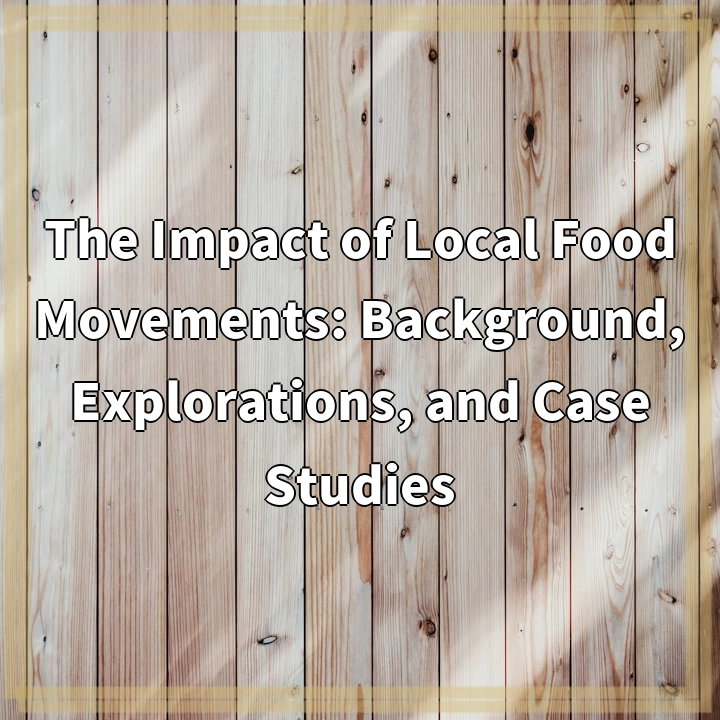
What Are Local Food Movements?
Local food movements are grassroots initiatives that aim to promote and support the consumption of locally sourced food. These movements advocate for the production and consumption of food that is grown, raised, and processed within a relatively close geographical region. The primary goal is to establish a more sustainable and resilient food system by reducing the distance between producers and consumers.
Real-World Problems Associated with Local Food Movements
1. Limited Availability and Seasonality
One challenge faced by local food movements is the limited availability and seasonality of certain food items. Depending on the region and climate, local farmers may struggle to cultivate a diverse range of produce throughout the year. This can result in a restricted variety of fruits, vegetables, and other agricultural products during certain seasons.
2. Cost and Affordability
Another real-world problem with local food movements is the perception that locally sourced food is more expensive compared to products from large-scale industrial agricultural systems. Higher production costs, including labor-intensive farming practices and smaller economies of scale, can lead to higher prices for locally produced food. This can create affordability issues for lower-income communities and limit access to fresh, nutritious, and locally sourced food options.
3. Distribution Challenges
Local food movements often face logistical challenges in getting locally produced food to consumers efficiently. The decentralized nature of these movements means that there may not be well-established distribution networks or infrastructure in place. This can result in difficulties in finding local food options in mainstream grocery stores and limited access to direct-to-consumer channels, such as farmers’ markets or community-supported agriculture (CSA) programs.
4. Education and Awareness
A lack of awareness and education about the benefits of local food movements can also pose a challenge. Many consumers are not fully informed about the environmental, economic, and health advantages associated with sourcing food locally. This lack of knowledge can contribute to a preference for conventional, mass-produced food options and hinder the growth and impact of local food movements.

Solutions to the Real-World Problems
1. Diversifying Crop Variety and Extending Growing Seasons
To address the limited availability and seasonality of local food, farmers can implement innovative techniques like greenhouse farming, vertical farming, and hydroponics. These methods can help extend growing seasons and enable the cultivation of a wider range of crops throughout the year. Additionally, farmers can collaborate with each other to diversify their offerings through crop rotation and cooperative farming.
2. Supporting Local Food Initiatives Financially
To tackle the cost and affordability issue, governments and communities can provide financial support to local farmers through grants, subsidies, and microfinance programs. Institutions can also partner with local food movements to create pricing structures that make locally sourced food more accessible to a wider range of consumers, including lower-income households.
3. Strengthening Local Food Distribution Networks
To overcome distribution challenges, local food movements can collaborate with local governments, organizations, and businesses to develop and expand distribution networks. This can involve establishing food hubs, coordinating with existing farmers’ markets, and promoting the inclusion of local food in mainstream grocery stores. Additionally, innovative solutions such as online platforms and delivery services can be explored to enhance convenience and accessibility for consumers.
4. Increasing Awareness and Education
Raising awareness about the benefits of local food can be achieved through educational programs, community events, and media campaigns. This can involve partnering with schools, organizing workshops, and providing resources that promote the understanding of sustainable food production and the importance of supporting local farmers. Building relationships between consumers and producers, such as farm tours and meet-the-farmer events, can also enhance awareness and appreciation for local food.















